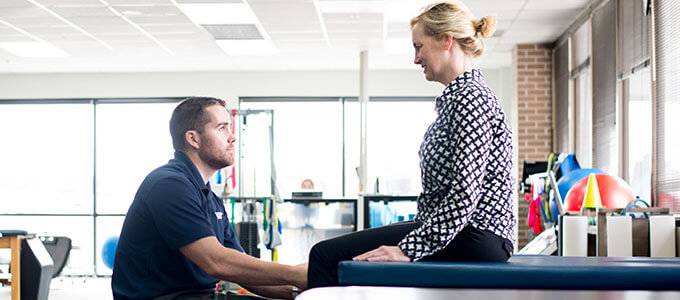
AOK is now offering Systemic Dry Needling as part of the wide range of services in our state-of-the-art Physical Therapy Department. After an overall assessment, Dry Needling may be recommended as part of your custom-tailored therapy plan that AOK creates for each of our patients.
What is Dry Needling?
Dry needling is a procedure that uses a thin filiform needle to penetrate the skin and stimulate underlying myofascial trigger points, muscular, and connective tissues for the management of neuromusculoskeletal pain and movement impairments. Dry needling (DN) is a technique used to treat dysfunctions in skeletal muscle, fascia, and connective tissue, and, diminish persistent peripheral nociceptive input, and reduce or restore impairments of body structure and function leading to improved activity and participation. (APTA, 2013)
Who is a candidate for Dry Needling?
DN may be incorporated into a treatment plan to help with pain from a wide array of orthopedic issues. Dry Needling can be used to treat tendonitis, joint dysfunction, migraines, carpal tunnel, pelvic pain, and can help improve range of motion in tight muscles. At AOK, we believe that educating our patients is an integral part of achieving excellence in medicine. We will thoroughly explain DN rationale and theory, what to expect during and after the treatment, the type of needle used, precautions, possible side effects, and expected outcomes.
What is a Dry Needling Procedure like?
Once we execute a physical therapy examination and evaluation to ascertain the appropriateness, your physical therapist will determine the areas in which DN will be performed. Your practitioner will palpate the target muscle for a taut band and identify a hyperirritable spot within the taut band. The filiform needle in its tube is fixed with the non-needling hand against the suspected area by using a pincer grip or flat palpation depending on the muscle orientation, location, and direction of needle penetration. With the needling hand, the needle is gently loosened from the tube. The top of the needle is tapped or flicked allowing the needle to penetrate the skin. The needle is then focused in this area or other neighboring areas by drawing the needle back toward the subcutaneous tissue without taking it out of the skin, and then redirecting the needle toward the remaining areas. Once the needle has been withdrawn completely from the skin, pressure (hemostasis) can be applied directly to the skin over the needle insertion site to aid in the prevention of possible swelling or post needling soreness. Further needling can be performed for the same muscle or for other clinically relevant musculature within the same treatment session.
If you are interested in more information or think that Dry Needling may benefit you, please contact the AOK Physical Therapy Department.


